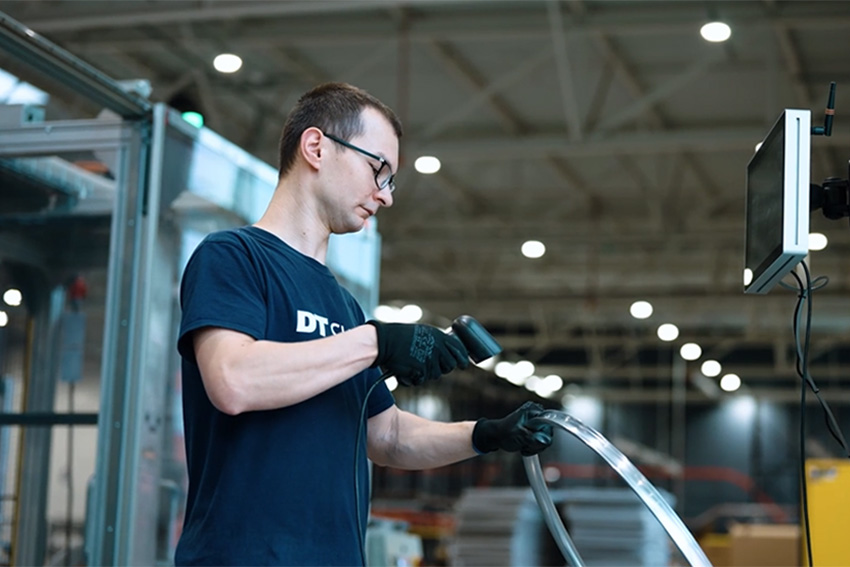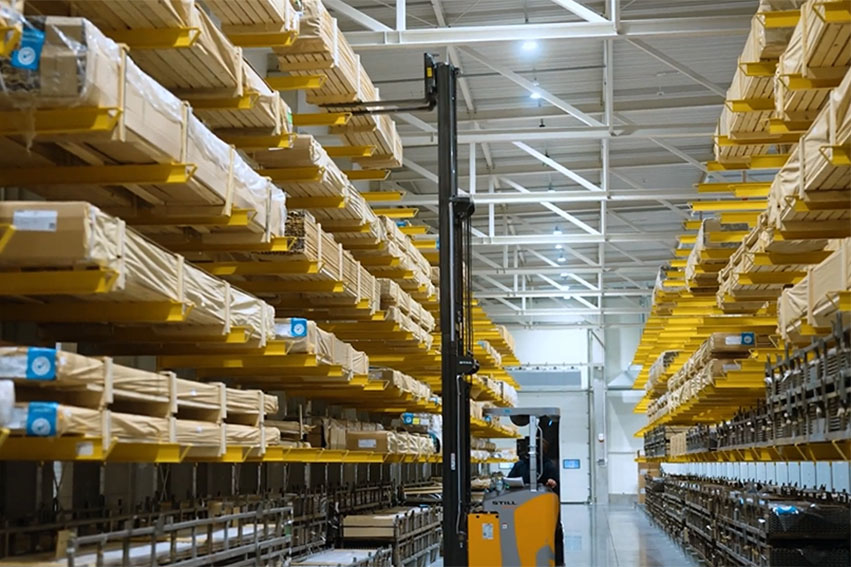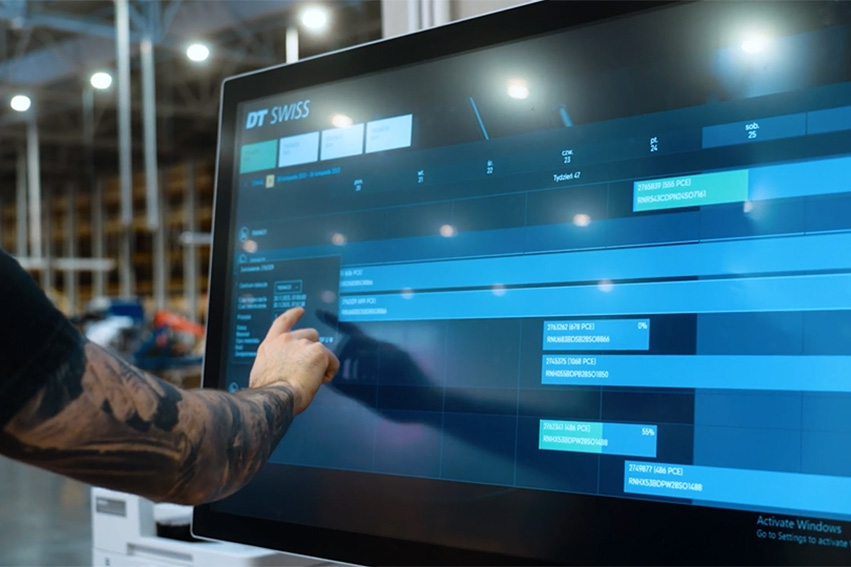‘The cost savings offered by the smart factory concept are impressive.’
The bicycle component manufacturer DT Swiss is using the smart factory concept to expand its production capacity. It has already increased efficiency by between 15 and 20 percent.
Smart factory saves time and money 4 Min
- Employees: 300 (Switzerland), 1000 globally
- Sector: Manufacturer of bicycle components
- Headquarters: Biel
- Real-time data capture and digital control improve production processes and transparency
- Increased efficiency and quantifiable cost and time savings
- Error sources identified and minimised more quickly
Spokes, aluminium rims or mountain bike suspension forks. DT Swiss is headquartered in Biel. Over the past 30 years, it has become the market leader in high-end bicycle components. Top athletes, including multiple mountain bike world champion Nino Schurter, have crossed the finish line with DT Swiss bicycle components. The company is growing all the time, thanks in part to its international sales organisation with subsidiaries in the USA, Asia, France, Germany and Poland.
Digitalisation has a huge role to play in the growth strategy of DT Swiss, as demonstrated by the company’s most recent decision: “We wanted to expand our capacity and increase our production of aluminium rims to two million per year,” explains Michael Schütz, CFO at DT Swiss AG.
Digital upgrades with SAP S/4HANA
DT Swiss saw this as a good opportunity to build its new production facility in Poland as a smart factory, with the aim of digitalising production and assembly processes wherever possible. “We hoped that this would improve the material flow, increase transparency and efficiency in production and logistics, ensure better traceability of goods, improve quality and reduce downtimes,” says Schütz.
In the production process in particular, a great deal of work was still done using Excel spreadsheets and plans. Furthermore, there was certain knowledge known by just a few employees. “By automating the workflows, we wanted to scale our processes and minimise sources of error,” explains Schütz. The first step would be to migrate the business software used worldwide from SAP to SAP S/4HANA. There was a call for tenders to find the right partner for this project. After carefully evaluating the proposals, DT Swiss opted to continue its long-standing collaboration with Swisscom for this IT project.
SAP S/4HANA was implemented using the brownfield approach, in which the existing system landscape is technically migrated to S/4HANA. The advantage of this method is that current processes and data and existing investments can continue to be used. This was a very sensible approach for DT Swiss because it meant that project risks and costs could be minimised, as not all components of the system landscape had to be redeveloped. “For the smart factory, this step was crucial because one of the features of the HANA database is that it facilitates real-time processing of large data volumes,” explains Schütz. The go-live on 1 January 2023 went without a hitch.
Introducing the smart factory
The second stage for DT Swiss took just under nine months and involved working with Swisscom to undertake detailed analysis of the production processes, which had not yet been digitalised to any great extent. “We must have spent 900 hours on it,” says Michael Schütz. The logistics routes in the new facility in Poland were simulated and the individual stages from the delivery of goods to the finished product were analysed in detail, with the aim of mapping the processes in the system. To this end, SAP S/4HANA was expanded to include an SAP-based enterprise integration platform, allowing the company to digitalise the shopfloor processes and to create standardised, integrated production work centres. This was achieved by implementing SAP MII (SAP Manufacturing Integration and Intelligence).
“In our particular case, smart factory means that the entire production in the new production facility in Poland is integrated into the company as a whole,” explains Michael Schütz. In the production operations these days, all the necessary data, including the data captured from the process controls and machine information, is summarised electronically on a single screen. Employees are taken step-by-step through the entire planning and production process, and this includes logistics too. It was important for employees to be involved in the project from the start, because it is they who ultimately operate the machines. “We worked together to identify problem areas and come up with solutions,” explains Schütz. He sees effective employee involvement as crucial to the success of projects of this scale.
Significant cost and time savings
In October 2023, DT Swiss launched the production of aluminium rims in Poland using the smart factory concept. Significant benefits became apparent after just a few months: digitalisation prevents transport mistakes and detours in logistics. The material flow and machine status can be viewed online at any time. “I can now see, at any point, whether all machines are running smoothly and I can quickly identify potential sources of error,” explains Michael Schütz. Digital control and continuous data capture have also provided much greater transparency within the individual processes. He also reports less downtime.
“We have already achieved a 15 to 20% increase in efficiency. In the end, this is likely to be 30%,” says Michael Schütz. He anticipates cost savings of 20% in the manufacturing process. For DT Swiss, the investment has already paid off. “The many quantifiable savings offered by the smart factory concept are impressive.” As the pilot in Poland has got off to such a positive and efficient start, the concept is set to be rolled out at the headquarters in Biel in 2024.




